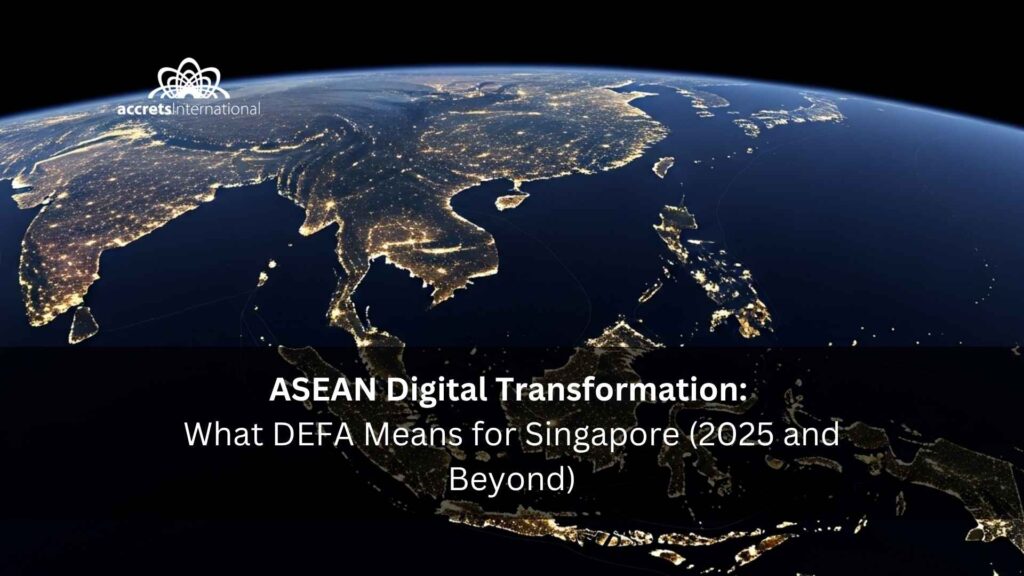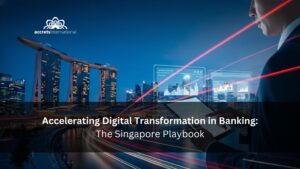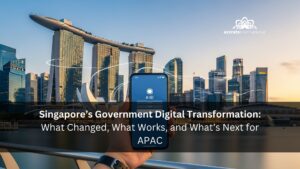ASEAN digital transformation is accelerating, and DEFA is the policy engine that will shape how Singapore companies move data, accept cross-border payments, trust digital identity, and protect consumers. This article gives you a clear, SG-first playbook of what to do now, why it matters, and how to build resilience while staying practical. If this is your priority, let’s read together until the end so you can turn policy into progress today.
Table of Contents
ToggleTL;DR
ASEAN’s digital transformation is entering an execution phase. The ASEAN Digital Economy Framework Agreement (DEFA) aims to make cross-border business in Southeast Asia simpler and safer, including smoother data flows, interoperable digital identity, e-payments that work across borders, and stronger online consumer protection. For Singapore operators, this means practical to-dos: map data movements, pilot Singpass-enabled onboarding for regional users, prepare for ISO 20022 payment messaging, and uplift disclosures and dispute handling. Use current SEA market numbers to prioritise bets, then validate your architecture for resilience and compliance. Start with a 90 day plan, track three KPIs (affordability, SME digitalisation, cyber talent), and watch DEFA milestones in 2025 to 2026.
The Big Picture: ASEAN’s Digital Leap and DEFA’s Role
Over the past decade, Southeast Asia has built one of the world’s most dynamic internet economies. Policymakers are now moving to harmonise rules so that cross-border trade and services feel more like a single market than a patchwork. That is where DEFA comes in: it is designed to accelerate regional digitalisation by aligning principles for trusted data transfers, e-payments, digital identity, and consumer protection, and by creating cooperation channels so countries can implement together rather than alone.
Singapore starts from a position of strength. The city state’s public sector has long treated digital as a strategic capability. If you need a refresher on how whole of government programs cohere, this overview of Singapore’s government digital transformation frames the policy ambition that has influenced the region. For private enterprises, the opportunity is to translate that policy momentum into operational wins such as faster onboarding, fewer checkout failures, lower cross-border friction, and higher customer trust.
The Singapore Lens: What Actually Changes for Operators
For teams headquartered or regionalised in SG, three enablers make DEFA real:
- Trusted identity and onboarding. Singapore’s National Digital Identity, Singpass, already underpins millions of secure transactions. As more ASEAN economies converge on interoperable identity, SG businesses can design onboarding that recognises verified users across borders, reducing manual KYC and drop off.
- Payments that travel. As links like PayNow to PromptPay showcase, real time rails are going regional. The DEFA vision is not to dictate technology choices, but to encourage interoperability so merchants can receive, refund, and reconcile with fewer custom connectors.
- Data with guardrails. Cross border flows remain essential for customer experience and analytics. The shift is to make those flows explainable and auditable, with clear lawful bases, minimised transfers, and breach ready processes.
When translating these into roadmaps, remember SG’s infrastructure realities, such as network quality, data centre availability, and strong vendor ecosystems. For context on build versus buy decisions at the mid market and enterprise layer, see this blueprint on corporate IT infrastructure in Singapore and the primer on IT infrastructure capacity planning for forecasting bandwidth, storage, and DR commitments.
Reality Check (Data): SEA in 5 Minutes
Even the best policy ideas need commercial gravity. Recent SEA internet economy updates point to healthier unit economics in core verticals, a steady climb in digital financial services, and resilient cross-border commerce. Use those numbers as a prioritisation compass:
- If DFS and e-payments penetration are rising, double down on payment success rates and refund SLAs.
- If logistics costs trend down in key corridors, revisit regional delivery promises and returns windows.
- If marketplace ad spend shifts, rethink your multi channel attribution.
As you firm up the plan, validate resilience. During BC and DR conversations, reference what best in class providers do for backup, failover, and auditability. This guide to cloud computing service providers in Singapore for backup and disaster recovery is useful to benchmark RPO and RTO and testing cadence.
DEFA vs DEPA and How It Differs From Broader Digital Chapters
Many Singapore teams already know DEPA, the Digital Economy Partnership Agreement. DEFA is broader in membership and aims to create a common ASEAN baseline. In practical terms:
- Data flows: align on lawful transfer mechanisms and proportional safeguards rather than hard data localisation.
- Digital ID and trust: encourage mutual recognition and technical interoperability so verified users can transact across borders with less friction.
- E invoicing and e signatures: promote standards adoption so procurement, contracting, and finance do not break at the border.
- Online consumer protection: support consistent disclosure, returns, and dispute handling to raise user trust region wide.
- Cooperation: create workstreams so regulators, standards bodies, and industry can iterate together.
If you are debating platform decisions while enabling these principles, it helps to align on the stack. A quick refresher on service model boundaries can help. See the explainer on the difference between Platform as a Service and Infrastructure as a Service and a pragmatic list of the advantages of IaaS to anchor architecture trade offs.
Your 90 Day DEFA Readiness Playbook for Singapore Operators
Day 1 to 30: Inventory, legal bases, and quick wins
- Map systems to data categories to destinations. Document lawful bases, DPO contacts, and breach playbooks.
- Refresh Records of Processing Activities and third party DPAs.
- Pilot Singpass enabled or equivalent trusted ID flows for one high impact journey such as merchant onboarding or account recovery.
- Run a payments health check: success rates, refund latency, chargeback flows, and the impact of ISO 20022 on your stack.
- Align your ops dependencies. If you need hands on help, a neutral primer on business IT support in Singapore can help you scope coverage hours and SLAs.
Day 31 to 60: Controls, commerce, and customer promises
- Implement data minimisation and purpose limitation updates. Verify encryption at rest and in transit and logging coverage.
- Launch a cross border checkout experiment: show duties and taxes, multi currency, and clear refund timelines.
- Stand up payment dispute templates and multilingual notices consistent with online consumer protection principles.
- Tune operational governance. If you are formalising roles, this overview of what is IT infrastructure management services clarifies responsibilities from monitoring to lifecycle control.
Day 61 to 90: Prove resilience and scale the wins
- Scenario test failover to a secondary region. Pin down RTO and RPO.
- Negotiate data processing clauses with key vendors on cross border transfers.
- Publish a trust page: lawful bases, cookies and consent, dispute channels, and average response times.
- Decide resourcing. For capacity spikes or capability gaps, evaluate right sourcing with a primer on what is IT outsourcing services.
Three SG First Scenarios Under DEFA Aligned Practices
Fintech and Payments
Before: manual KYC, inconsistent refunds, friction for cross border users.
After: verified onboarding such as Singpass for SG and reciprocal IDs as they interoperate, automated dispute flows, and ISO aligned messaging. KPI ideas: onboarding time, payment acceptance, refund cycle time. Security is non negotiable. If you are formalising threat models and audits, this explainer on cloud security consulting services in Southeast Asia lays out typical controls and assessment scopes.
Cross Border E Commerce
Before: checkout failures on cards and wallets, opaque duties, weak return handling.
After: interoperable payments with transparent fees, stronger identity for high risk actions, and region friendly returns. KPI ideas: cart conversion, authorisation rate, return and refund SLA. When tuning architecture for latency and compliance across ASEAN, revisit deployment patterns. This guide to hybrid cloud providers in Singapore and the primer on understanding the interoperability of inter cloud services can help you choose between local zones, multi region clusters, or a split brain design.
B2B SaaS Expanding From Singapore
Before: prolonged enterprise procurement due to data concerns and slow contract cycles.
After: customer explainable data maps, jurisdiction aware processing, and standardised e signature flows that make legal review faster. KPI ideas: time to contract, security exceptions per deal, support tickets per 1,000 users. In regulated verticals, architecture choices carry extra weight. If you serve FIs, cross check expectations with this sector note on cloud banking solutions in Singapore and Southeast Asia or, more broadly, how institutions are accelerating digital transformation in banking.
Risk and Inclusion: Guardrails and 3 KPIs to Track
A durable DEFA strategy balances growth with inclusion and safety:
- Affordability. Track the share of customers who can access your services without punitive data or roaming fees. Pair with infrastructure choices that keep latency and egress cost predictable. Where hosting matters, align to recognised facility standards. For a baseline, see this Tier 3 data center definition, and consider the trade offs with Tier 4 for higher redundancy or regional options like Tier 2 data centers in Southeast Asia for edge workloads.
- SME digitalisation. Build pathways that SMEs can adopt quickly such as clear pricing, templated security artefacts, and guided onboarding. If your customers need infra without the drama, point them to pragmatic explainers like Singapore cloud VPS to calibrate speed, cost, and compliance trade offs.
- Cyber talent. Measure time to patch, coverage of critical controls, and incident drill frequency. If you are re platforming from legacy virtualisation, this take on VMware alternatives provides context for capability gaps, licensing shifts, and ops maturity.
What Is Next: Timelines and Milestones to Watch
DEFA is not a single switch on date. Expect staggered progress via negotiation rounds, pilot programmes, and reference implementations. For operators, the implication is to establish a cadence: quarterly reviews of cross border data maps, identity integrations, and payment flows, plus DR tests aligned with change windows. As you do this, keep your infra agile. Teams that can lift and shift or scale particular workloads quickly tend to win the next quarter. If you are comparing hosting patterns for speed, cost, and compliance in SEA, this buyer’s guide to Singapore cloud VPS offers practical heuristics for burst capacity and egress planning.
Plain English Glossary
- DEFA, ASEAN Digital Economy Framework Agreement. A region wide framework to align rules and cooperation for digital trade such as data, payments, identity, and consumer protection.
- DEPA, Digital Economy Partnership Agreement. A pioneering digital agreement Singapore helped launch and a reference for DEFA’s spirit of interoperability.
- Digital identity. Ways to verify people or businesses online such as Singpass, increasingly interoperable across borders.
- Cross border data flows. Movement of personal and business data between countries under lawful bases and safeguards.
- ISO 20022. A global messaging standard for financial services that affects how your payments and settlement systems communicate.
- E signature and e invoicing. Digitised contracting and billing that stands up legally across jurisdictions.
- Service models. If you are new to the layers, see the difference between PaaS and IaaS and the advantages of IaaS as a quick recap.
Infrastructure, Resilience, and Compliance: The SG Reality Check
The best DEFA aligned customer journey fails if your foundation buckles under demand or audits. Validate:
- Hybrid and multi cloud patterns. Reduce single region risk while keeping latency low. This guide to hybrid cloud providers in Singapore lists common patterns for SG plus ASEAN deployments.
- Operational leverage. For teams without 24 by 7 coverage, consider targeted support instead of full rebuilds. A neutral overview of infrastructure IT outsource service in Singapore and managed vs cloud services, the difference and which do you need can help you pick the right blend.
- Inter cloud reality. Few stacks are single provider anymore. Review data plane portability and policy enforcement using this explainer on inter cloud interoperability.
Conclusion and Contact
DEFA’s promise is simple: make it easier, safer, and faster to do digital business across Southeast Asia. For Singapore operators, the edge is execution, which means tidy data maps, trust by design onboarding, low friction payments, resolute resilience, and plain English customer promises. Start with the 90 day playbook, track the three KPIs, and review progress each quarter as regional milestones unfold.If you would like hands on help building a DEFA ready roadmap for ASEAN digital transformation, you can book a free consultation with an Accrets Cloud Expert. Depending on your needs, we can discuss options such as managed IT services, managed backup services, enterprise cloud computing, on premise private cloud, cloud infrastructure as a service, enterprise applications with Office 365, and enterprise connectivity with Teridion, aligned to your SG plus ASEAN operating model.
Dandy Pradana is an Digital Marketer and tech enthusiast focused on driving digital growth through smart infrastructure and automation. Aligned with Accrets’ mission, he bridges marketing strategy and cloud technology to help businesses scale securely and efficiently.




